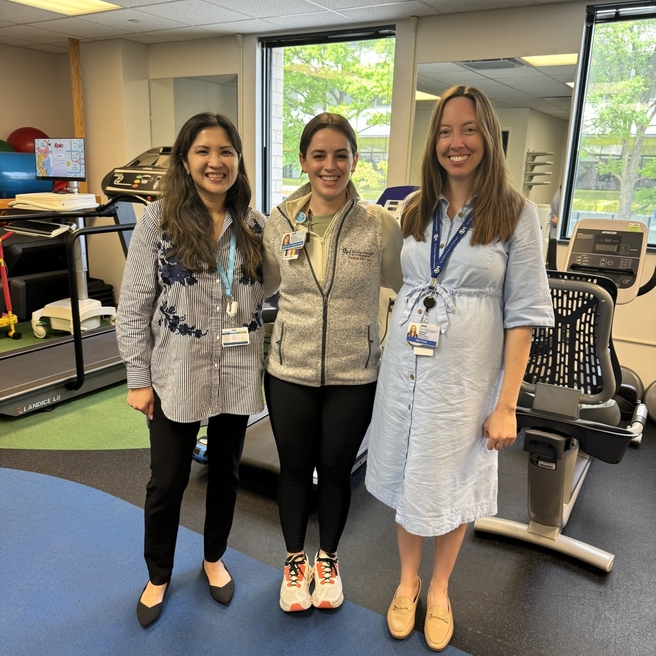Steatotic liver disease, referred to by many as “fatty liver,” is a condition when too much fat accumulates in the liver. This is usually identified by imaging (i.e., ultrasound, CT scan or MRI) or through a liver biopsy.
When fat in the liver (hepatic steatosis) is linked with a least one cardiovascular risk factor (such as those listed below), and in the absence of medications, toxins or another disease that may cause fat accumulation, the condition is called metabolic dysfunction-associated steatotic liver disease (MASLD). Until recently, MASLD was referred to as non-alcoholic fatty liver disease (NAFLD). The name changed as this form of liver disease has no link to alcohol; and after more study has been linked to metabolic dysfunction.
Cardiovascular risk factors that play a role in MASLD include obesity, increased waist circumference, insulin resistance, pre-diabetes or diabetes, elevated blood pressure, high triglycerides or low high-density lipoprotein (HDL).
MASLD is the most common cause of chronic liver disease in children affecting at least 10% of children in the United States. It affects up to one third of adults and is one of the leading causes of liver transplants in adults.
When left untreated, MASLD can lead to liver damage by causing inflammation and scarring (fibrosis) in the liver. This can ultimately lead to cirrhosis and liver failure, requiring a liver transplant.
Lifestyle interventions, including nutrition and physical activity changes, remain the first line of treatment for MASLD. In all but the most advanced cases, lifestyle changes associated with weight loss can reverse the damage caused by MASLD. Medications and bariatric surgery may also be used to treat MASLD.
MASLD is more common in children and adolescents who:
- Are overweight or obese
- Have an increased waist circumference (central adiposity)
- Have elevated triglyceride levels in their blood, lower HDL (sometimes called “good cholesterol”) and dyslipidemia (abnormal levels of lipids or lipoproteins in the blood)
- Are insulin resistant
- Have high blood sugar levels (which may indicate pre-diabetes or type 2 diabetes)
- Have high blood pressure (hypertension)
- Have certain metabolic disorders, including metabolic syndrome and lipodystrophy
- Have associated disorders such as hypothyroidism/subclinical thyroid disease, polycystic ovarian disease, obstructive sleep apnea, panhypopituitarism or vitamin D deficiency
Signs and symptoms
MASLD can be present without symptoms. When symptoms do occur, they may include pain or discomfort in the upper right side of the abdomen.
In cases of advanced liver disease, when the disease causes damage to the liver, symptoms may include:
- Yellowing of the skin and eyes (jaundice)
- Abdominal swelling (ascites)
- Abnormal bruising
- Chronic fatigue
- Skin itching (pruritus)
- Enlarged spleen
- Enlarged blood vessels under the skin
- Abnormal brain function (encephalopathy)
Testing and diagnosis
Most patients with MASLD are asymptomatic. In many cases, elevated liver enzymes levels are discovered during routine health screening due because of a family history of obesity or diabetes. The American Academy of Pediatrics (AAP) recommends screening for MASLD in:
- Children ages 9 to 11 who have a history of being overweight or obese, and have other risk factors
- Children of any age with a family history of MASLD (formerly known as NAFLD).
Additionally, patients may be identified due to an incidental finding of hepatic steatosis also known as “fat in the liver” as seen on imaging, such as ultrasound.
When MASLD is suspected, the doctor will do a thorough physical exam and take a history of the patient’s health and symptoms. Tests used to diagnose MASLD may include:
- Blood tests for liver enzymes, alanine aminotransferase (ALT) and aspartate aminotransferase (AST); to rule other reason chronic liver conditions, such as an infection, autoimmune disease, metabolic or genetic disorders
- Ultrasound imaging
- Magnetic resonance (MR) elastography
- Liver biopsy
Treatment
The first line of treatment for MASLD is lifestyle change, focusing on nutrition and physical activity, sleep and social habits. Research in adults with MASLD has found that a 10 percent reduction in weight can help with fibrosis resolution.
In many cases, weight management requires a multidisciplinary team to support goal setting, activity tracking and positive reinforcement; motivational interviewing, using a family-based approach to help support a child making healthy lifestyle changes.
When behavior changes alone don’t work to reduce the fat buildup in the liver, medication and – if warranted – bariatric surgery may be considered.
So far, no medicines have been FDA-approved to treat children with MASLD, but studies continue to investigate possible medication treatment options.
Outlook
In all but the most advanced cases, lifestyle changes to reign in excess weight can reverse the liver damage caused by MASLD. In advanced cases – where MASLD advances to cirrhosis of the liver and/or liver failure – a liver transplant may be needed.
Follow-up care
Health gains through lifestyle changes must be sustained to prevent MASLD recurrence. Patients diagnosed with this disease require regular monitoring to reassess disease activity, and treatment altered to best meet their needs. Ongoing support to maintain positive lifestyle and health changes may be needed.
Why choose CHOP for MASLD?
The MASLD Program at CHOP is led by a skilled multidisciplinary team comprised of physicians who specialize in nutrition, pediatric gastroenterology, liver diseases and obesity medicine, a nurse practitioner, registered dietician, and physical activity specialist with obesity expertise.
We use a structured program that is tailored to each individual patient to meet their needs. We are dedicated to helping patients and families make diet, health and activity changes they can sustain for life. Our goal is to help educate and empower our young patients to make healthier choices to expand the function and viability of their own liver and avoid the need for transplant as long as possible.
Resources to help
Metabolic Dysfunction-Associated Steatotic Liver Disease Program Resources
Caring for a child with an illness can be overwhelming. To help you find answers and feel confident with the care you’re providing your child, we’ve created the following list of health resources.
Reviewed by Jennifer Panganiban, MD
